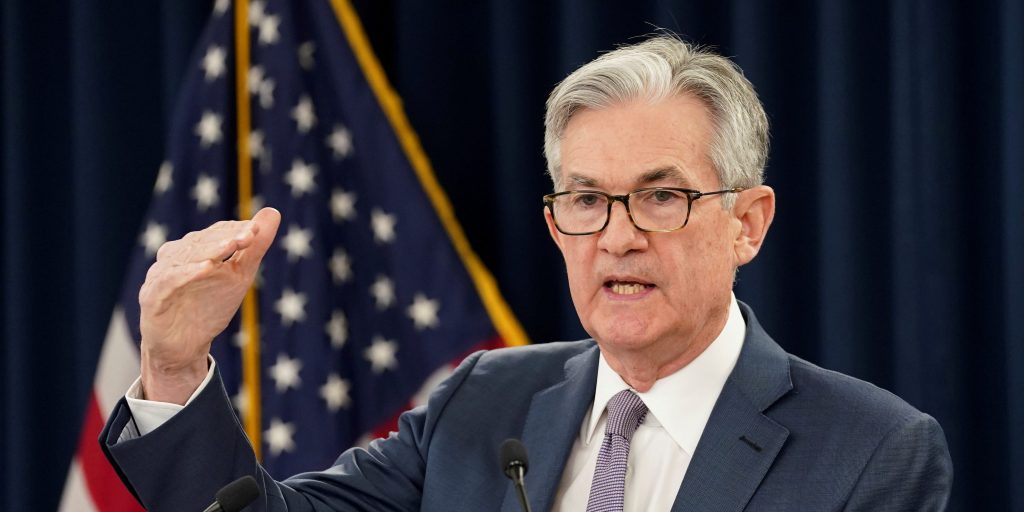- The Fed raised interest rates by 0.75 percentage points on Wednesday, repeating the hike seen in June.
- The increase triples the size of the Fed's usual hike and marks an aggressive effort to cool inflation.
- Higher rates makes all kinds of debt, from credit cards to mortgages, more expensive.
The Federal Reserve raised its benchmark interest rate by 0.75 percentage points on Wednesday, extending a streak of larger-than-usual hikes amid ever-faster inflation.
The Federal Open Market Committee ended its two-day July meeting with another triple-sized rate hike, matching the one issued in mid-June. The benchmark rate now sits between 2.25% and 2.50%, roughly matching what officials estimate to be a "neutral" level for rates that's neither stimulative nor restrictive. The 0.75-point hike is only the second such increase since 1994 and reflects the Fed's still-aggressive stance toward countering high inflation.
"The Committee decided to raise the target range for the federal funds rate to 2-1/4 to 2-1/2 percent and anticipates that ongoing increases in the target range will be appropriate," the Fed said in a statement.
The increase was unanimously supported by the committee's 12 voting members.
The hike comes two weeks after government data showed price growth accelerating again last month. The Consumer Price Index — a closely watched inflation metric — soared 9.1% in the year through June, marking the fastest pace since November 1981. The print landed well above economists' forecasts and emphasized just how difficult taming inflation is proving to be. Higher rates aim to cool inflation by slowing economic activity, but they operate with a lag. As such, the effects of the June increase likely won't reverberate throughout the economy until the end of the summer at the earliest.
The report also solidified confidence in financial markets that the Fed would keep its foot firmly on the brake. Investors priced in a triple-sized rate hike earlier in July after previously wavering between a 0.75-point and 1.0-point increase. Recent commentary from Fed officials erased most bets on a full-point hike, with investors betting on the Fed to show some trepidation around slowing the economy too quickly.
"The Federal Reserve's 75 basis-point increase now means that, in the space of just four months, they have hiked rates by as much as they did over the entire 2015-2018 hiking cycle," Seema Shah, chief global strategist at Principal Global Investors, said. "This is rapidly proving to be one of the most aggressive hiking cycles we've seen in recent decades.
Such concerns are likely to be amplified in the weeks ahead. The Fed meeting comes just one day before the Commerce Department publishes its initial reading of second-quarter economic growth. Economists generally expect output to grow at an annualized rate of 0.5%, but several projections see the economy shrinking for a second consecutive quarter. A negative print would escalate concerns of an impending recession, as many regard back-to-back quarters of negative GDP as a clear sign of a downturn.
A disappointing GDP number would also constrain the Fed even further. The central bank has caught flak for its fast-paced hiking cycle, with many arguing the Fed will stifle demand too quickly and quickly sap what momentum the recovery has left. Fed Chair Jerome Powell has pushed back against the notion that a recession is inevitable, but has acknowledged that raising borrowing costs to slow inflation could inflict some pain on households.
There are some signs the Fed won't have to act as aggressively in the months ahead. The national average gas price is down roughly $0.70 from the record high seen in mid-June, signaling the energy inflation that's plagued households throughout 2022 is easing up. Prices for other commodities are similarly trending lower.
Only time will tell if the declines stick, but as the Fed moves forward with its war on inflation, the slumps offer some hope that the central bank can avoid a self-imposed recession.
This story is breaking, check back soon for updates.

